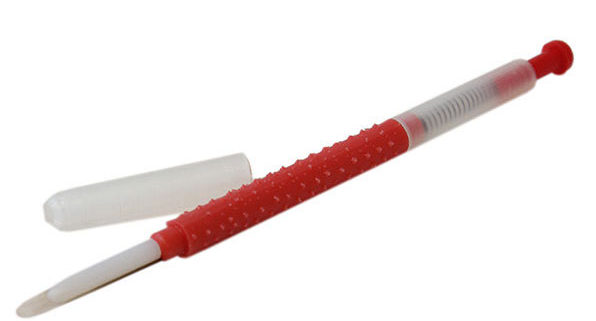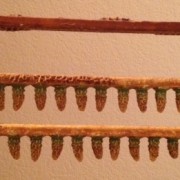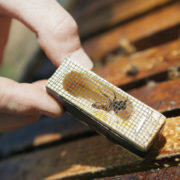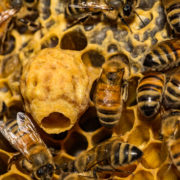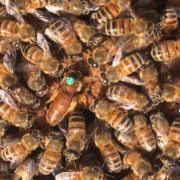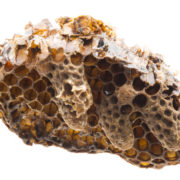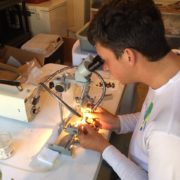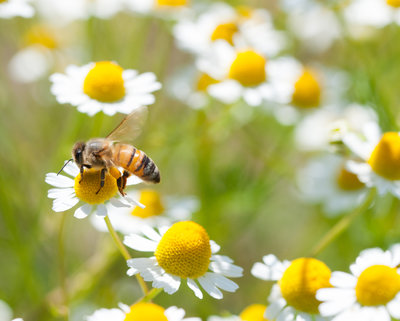The Queen Bee Grafting Tool
Imagine a tool that is designed to be as flimsy as possible. If you went to The Home Depot and asked their staff for their flimsiest tools, they would laugh at you. Who wants flimsy tools? The answer is the queen producer, that’s who.
Although, historically, beekeepers have utilized a number of different kinds of tools for grafting (grafting is the act of transferring larvae from breeder colonies to queen cell production cups), most beekeepers nowadays have settled on the “Chinese grafting tool” (shown above), as their preferred queen bee grafting tool of choice.
The Chinese grafting tool is a simple pencil-like object made of plastic that contains a thin plastic reed, or spatula, at the end. The reed is what picks up the delicate larvae. The grafting tool also features a spring-loaded plunger that the beekeeper uses to gently push the larva off of the reed and into the cup, thus allowing the beekeeper to precisely transfer an individual bee larva to a queen cell cup.
As soon as someone begins to graft larvae in quantity and as a serious endeavor, it immediately becomes obvious that the reed tip needs to be as flimsy as possible. A stiff reed does not give easily, making grafting more of a challenge than it needs to be.
Eventually a beekeeper will break in his or her favorite grafting tool and get used to the flimsy feel of that particular tool, to the point where it becomes like an old friend, something similar to the way a well broken-in baseball mitt feels to a nimble shortstop, or the way a priceless violin feels to a concert violinist. The main difference, of course, is that a grafting tool only costs about $3, and an unassuming beekeeper performs not in front of a cheering crowd, but alone and in peace among the humble bee larvae and future queens.

